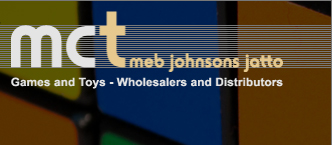THE TOY INDUSTRY
The toy industry is composed of companies and organizations engaged in the manufacturing of a wide range of products, being one of the most dynamic sectors, and exemplary in terms of growth and progress.

The toy industry is a worldwide cluster with long-established relationships and networks involved in the import and export of parts and components, production, marketing and distribution activities. A highly concentrated sector with about 50 companies generating about 75% of revenue, which directly and indirectly employs several million people around the world, with Asia as the leading supplier of products (more than 97% of the total import), and China and the main producer (91%).
The toy industry is divided into large companies, with scale advantages in the production and distribution; and small- and medium-sized companies competing by specializing in very specific production and marketing segments, or by applying their ability to respond faster to changes and new trends in the sector.
The worldwide toy industry has demonstrated a considerable resilience to economic, social and environmental challenges in the last years, ensuring its survival through a continuous process of transformation and adaptation to changing markets, by a timely identification of market opportunities to adopt new strategies based in cooperation, diversification and innovation to meet the new demands, and face even the tough competition posed by electronic gadgets and games (which are covered in the entertainment and games software industry segment).
In the other way, the toy production sector is also divided in diverse segments that include electronic and non-electronic toys and puzzles, model and collector sets, children’s vehicles (excluding bikes), stuffed animals, dolls, action figures, and their respective accessories and playsets.
Toy production does not differ significantly from other industrial sectors, including methodologies and techniques adopted from other production systems, and with diverse levels of complexity depending on the type of toy to be produced. Thus, die-casting and blow or injection techniques to achieve any shape and appearance desired, later coloured by spray painting; or labour-intensive methods requiring sewing, stuffing or even hand painting to produce dolls or stuffed animals.
In many cases, the most sophisticated assembly-line processes with computing-integrated production systems put together toy components from multiple manufactures and contractors mainly located in the Far East (primarily China) to benefit from low production and labour costs, which has also led many toy companies to manage their own facilities in such areas, scheduling production on the basis of past sales, historical trends, market conditions and other estimates to reduce inventory excesses or shortages to the minimum possible.
Considering the size of the modern toy industry, raw materials are a factor of great weight and importance in determining the profitability of large-scale projects involving the use of plastic, oil-based resins and certain metals and alloys.
Technology has also a significant importance in the development of this sector, derived from a growing demand for electronic and interactive toys, which require more and more sophisticated computer and mechanical components to improve the play experience and competitiveness of traditional toys, such as sensors and associated systems that allow, for instance, pet toys and dolls to respond and move to commands, which represents a new, interesting area for the research and innovation of new solutions.


Copyright © 2014 MCT - Meb Johnsons Jatto
All rights reserved.



